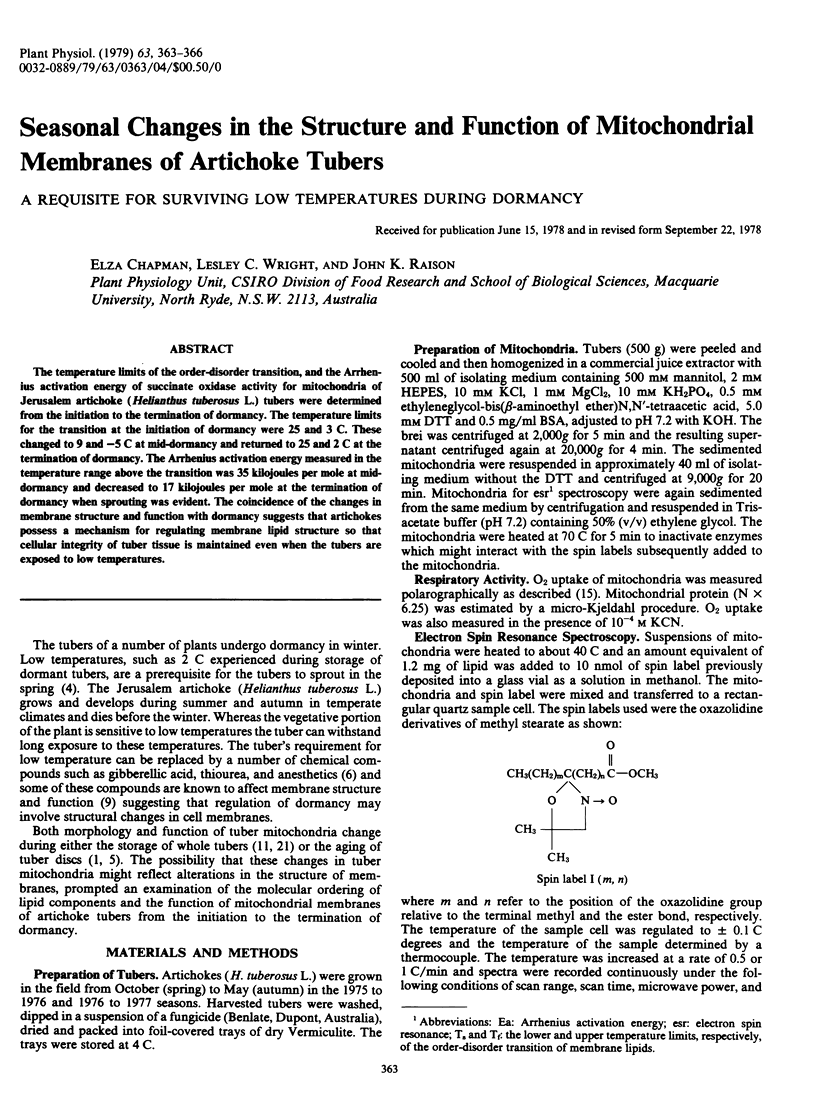Abstract
The temperature limits of the order-disorder transition, and the Arrhenius activation energy of succinate oxidase activity for mitochondria of Jerusalem artichoke (Helianthus tuberosus L.) tubers were determined from the initiation to the termination of dormancy. The temperature limits for the transition at the initiation of dormancy were 25 and 3 C. These changed to 9 and −5 C at mid-dormancy and returned to 25 and 2 C at the termination of dormancy. The Arrhenius activation energy measured in the temperature range above the transition was 35 kilojoules per mole at middormancy and decreased to 17 kilojoules per mole at the termination of dormancy when sprouting was evident. The coincidence of the changes in membrane structure and function with dormancy suggests that artichokes possess a mechanism for regulating membrane lipid structure so that cellular integrity of tuber tissue is maintained even when the tubers are exposed to low temperatures.
Full text
PDF



Selected References
These references are in PubMed. This may not be the complete list of references from this article.
- Castelfranco P. A., Tang W. J., Bolar M. L. Membrane transformations in aging potato tuber slices. Plant Physiol. 1971 Dec;48(6):795–800. doi: 10.1104/pp.48.6.795. [DOI] [PMC free article] [PubMed] [Google Scholar]
- Henry S. A., Keith A. D. Membrane properties of saturated fatty acid mutants of yeast revealed by spin labels. Chem Phys Lipids. 1971 Dec;7(4):245–265. doi: 10.1016/0009-3084(71)90004-1. [DOI] [PubMed] [Google Scholar]
- Keith A. D., Aloia R. C., Lyons J., Snipes W., Pengelley E. T. Spin label evidence for the role of lysoglycerophosphatides in cellular membranes of hibernating mammals. Biochim Biophys Acta. 1975 Jun 25;394(2):204–210. doi: 10.1016/0005-2736(75)90258-8. [DOI] [PubMed] [Google Scholar]
- Raison J. K., Laties G. G., Crompton M. The role of state 4 electron transport in the activation of state 3 respiration in potato mitochondria. J Bioenerg. 1973;4(4):409–422. doi: 10.1007/BF01648968. [DOI] [PubMed] [Google Scholar]
- Raison J. K., Lyons J. M., Campbell L. C. Inhibition of the state 3 respiration of isolated mitochondria and its implications in comparative studies. J Bioenerg. 1973;4(4):397–408. doi: 10.1007/BF01648967. [DOI] [PubMed] [Google Scholar]
- Raison J. K., Lyons J. M., Mehlhorn R. J., Keith A. D. Temperature-induced phase changes in mitochondrial membranes detected by spin labeling. J Biol Chem. 1971 Jun 25;246(12):4036–4040. [PubMed] [Google Scholar]
- Raison J. K., McMurchie E. J. Two temperature-induced changes in mitochondrial membranes detected by spin labelling and enzyme kinetics. Biochim Biophys Acta. 1974 Sep 6;363(2):135–140. doi: 10.1016/0005-2736(74)90053-4. [DOI] [PubMed] [Google Scholar]


